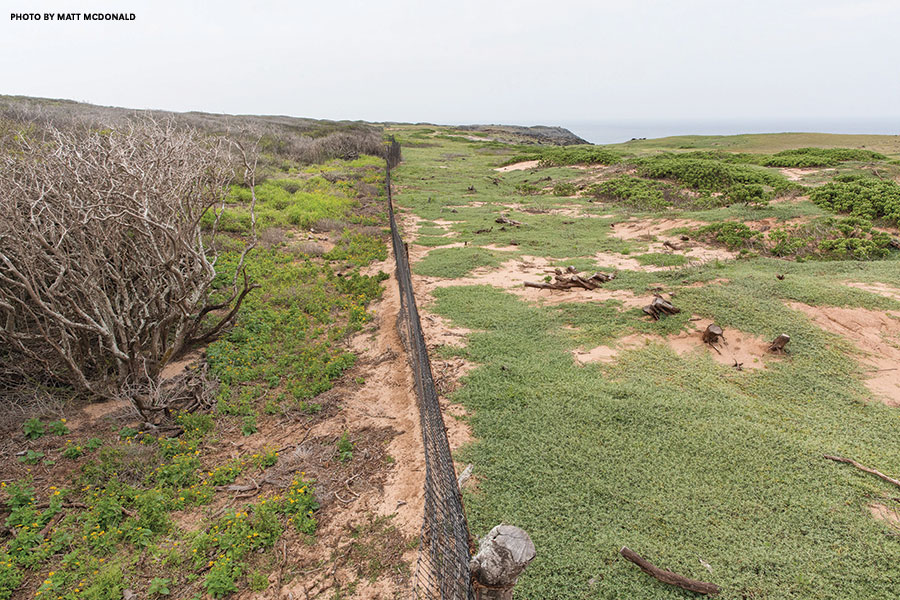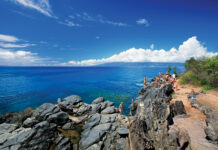
There’s ‘ewa hinahina, a native chaff flower once extinct on Moloka‘i, that the trust reintroduced; and ‘ena‘ena, a member of the aster family whose silvery leaves, Haase raves, make it “a sexy one to photograph.”
There are also fields of root casts, or rhizoliths, 25,000 years old. They’re formed when calcification slowly encases plant roots, creating structures that look like a miniature petrified forest or extraterrestrial sand castles. Basically, they just look really weird, and I definitely don’t want to step on one.
“We’ve found fossilized bird bones inside of these,” says Haase, “snails . . . even extinct land crabs. And that over there,” he adds nonchalantly, “that’s a five-inch rocket.”
As if the deer, kiawe, and cattle didn’t cause enough destruction, the U.S. military used Mokio for target practice, bombing the area from 1940 to 1949. Haase works with explosives teams to sweep the area for ordnance. It’s all part of the effort to bring Mokio back to life.
It’s tough work, considering the area’s size.
“Nobody,” says Haase, “has ever done a coastal restoration that transitions into a dryland forest. We’re pioneering that sort of restoration.”
To volunteer at Mokio Preserve, contact the Molokai Land Trust: 808-553-5626, MolokaiLandTrust.org, or volunteersmlt@gmail.com. Bring closed-toed shoes, sunscreen, water, snacks and sunglasses—and expect to travel on 4×4 roads that can be bumpy and rough.
Multiple airlines fly between Moloka‘i and Maui or O‘ahu, including Mokulele Airlines, Makani Kai Air, and ‘Ohana by Hawaiian.





